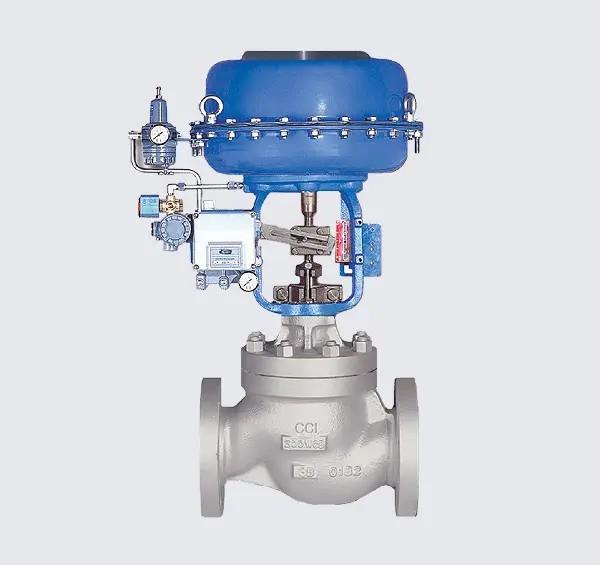Notifications

6 minutes, 20 seconds
-14 Views 0 Comments 0 Likes 0 Reviews

Understanding Control Valve Flow Characteristics
We are a leading control valve manufacturer in China, providing high-quality valves and control actuators designed to meet the diverse needs of various industries.
Introduction The flow characteristic of a control valve defines the relationship between its opening (or travel) and the flow rate passing through it. Choosing the correct flow characteristic is essential for achieving optimal performance, maintaining system stability, and ensuring efficient operation in industrial processes. An incorrect selection can result in control loop instability and inefficient fluid regulation. This article explores the most common flow characteristics of control valves, their applications, and their impact on system performance.
Overview of Control Valve Flow Characteristics Flow characteristics play a crucial role in control valves, which regulate fluid flow in various industrial applications. These characteristics determine how the flow rate changes relative to the valve stem position. Different characteristics serve distinct purposes, such as maintaining a consistent flow rate, compensating for pressure drop variations, or enabling rapid flow adjustments.
Control valves are designed with different flow characteristics, each suited for specific control loops. Selecting the right characteristic is key to achieving smooth, stable, and precise control, especially in applications requiring accurate regulation of flow and pressure.
Types of Flow Characteristics The primary flow characteristics in control valves include:
Quick-Opening Characteristic
Linear Characteristic
Equal-Percentage Characteristic
Modified Parabolic Characteristic
Hyperbolic and Square Root Characteristics
Each type influences valve operation and system interaction differently. Below, we examine each characteristic in detail, including its applications and benefits.
A quick-opening valve exhibits a rapid increase in flow rate with minimal valve travel. Initially, small stem adjustments produce large flow changes, but as the valve opens further, the flow rate increase slows down and eventually levels off near full opening.
Applications:
Ideal for on-off control applications where fast flow initiation is needed.
Common in batch processes and sequential operations.
Used in systems where high valve gain is acceptable.
In a linear flow characteristic, flow rate increases in direct proportion to valve travel, producing a straight-line relationship. This ensures a consistent gain across the entire travel range, making it predictable and easy to control.
Applications:
Liquid level control systems.
Flow regulation where constant valve gain is necessary.
Systems requiring stable, proportional control.
Equal-percentage valves provide an exponential relationship between flow rate and valve travel. Equal increments of stem movement result in equal percentage changes in flow. This characteristic is especially useful in systems where the pressure drop across the valve varies significantly.
Applications:
Pressure control systems.
Steam flow regulation.
Processes with fluctuating pressure drops.
A modified parabolic valve blends elements of linear and equal-percentage characteristics. It allows for fine control at low flow rates while maintaining a near-linear response at higher flows, making it a versatile choice for various process control applications.
Applications:
General process control systems.
Situations requiring both fine throttling and predictable higher flow performance.
These specialized characteristics cater to niche applications, where unique system dynamics require specific control valve behaviors. Though less common, they play a role in highly specialized industrial processes.
Inherent vs. Installed Flow Characteristics
Inherent flow characteristics are determined by the physical design of the valve trim, particularly the shape and size of its ports. Manufacturers provide characteristic curves plotting the percentage of flow against valve stem position. Common inherent characteristics include:
Linear: Flow increases proportionally with valve travel.
Equal-Percentage: Flow increases exponentially with travel.
Modified Parabolic: Offers fine control at low flow rates and near-linear behavior at higher flows.
In cage-guided valve designs, inherent characteristics can be modified by replacing the cage with one of a different flow profile, allowing customization for specific system needs.
Once installed, a valve’s flow characteristic is influenced by the entire system, including piping, pumps, and pressure variations. The installed characteristic may differ significantly from the inherent one due to pressure drops and other system dynamics. Understanding this distinction helps in optimizing control performance, as it provides a more accurate representation of real-world valve behavior.
Conclusion Selecting the appropriate flow characteristic for a control valve is crucial for maintaining system performance and stability. Engineers must consider both inherent and installed characteristics when designing control systems. Manufacturers provide characteristic curves to assist in valve selection, helping to ensure stable and efficient flow regulation. By aligning the valve’s behavior with the system’s requirements, operators can enhance control precision, reduce instability risks, and improve overall efficiency.Know more about Google SEO Directory

